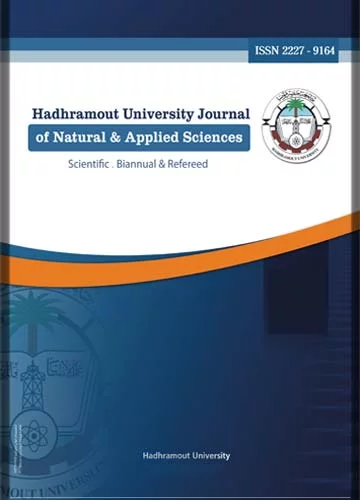Indoor/Outdoor Air Quality and Children Health Risk Assessment for PM10 and PM2.5 on Urban Areas at Al- Mukalla City, Yemen
Abstract
Particulate matter was measured inside and outside eight homes within urban areas of Al- Mukalla city,
Yemen by Gravimetric analysis using Tuff-Plus 3 Air Sampler. Sources observation and health risk
assessment were done using survey. Meteorological parameters and outdoor sources as well as indoor
sources of particulate matter were the main producer of indoor particulate matter air pollution, where
wind speed and direction showed significant effect on PM10 I/O ratio and positive effect of relative
humidity, while negative effect was from temperature. On the other hand, PM2.5 was positively affected
by temperature, wind speed and relative humidity and negatively affected by wind direction. Air Quality
was classified using health questionnaire air quality index and was confidential as hazardous air over the
urban areas of the Al- Mukalla city with extremely high level of PM2.5&PM10 causing respiratory disease
and symptoms of wheezing, itchy rash and asthma from the exposure of PM10 rather than the exposure of
PM2.5. This is because the PM10I/O ratio was 0.63 higher than PM2.5 ratio of 0.52.In addition to that, PM2.5
andPM10 outdoor concentration were above the WHO and EPA standards, although the outdoor
concentration of PM2.5 was higher than that of PM10. Finally, PM2.5& PM10 were derived through
migration of outdoor particles since I/OPM10 and PM2.5 were ≤1.

